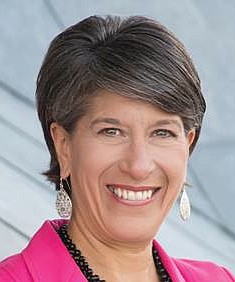"You got an iPhone?" said the Millennial to her grandmother. "Why did you get an iPhone? You don't need a smartphone. Do you even know how to text? I think you should just stick with making phone calls."
"Yes, I got an iPhone. And I do too need an iPhone if I'm going to keep up with you and everybody else. I can learn to text," said the grandmother in an exasperated tone.
"This ought to be interesting," the Millennial said under her breath as she rolled her eyes.
Whatever generation you are part of, you have more than likely experienced a conversation with someone from a different generation about communication these days. It may have been about tone of voice, facial expressions, body language, paper versus electronic means or any number of things.
While it seems that most generations may have a preferred method of communication, it doesn't mean that people aren't capable of adapting and adjusting in order to keep the lines of communication open between generations.
Perhaps the place where communication differences seem to be magnified and often collide is in the workplace. Most workplaces have at least four generations working together. Some have five, which can definitely make for some interesting communication dynamics. This is especially true as communication methods have expanded in recent years.
If you look at the communication preferences by generation, Baby Boomers tend to appreciate face-to-face and personal interaction, which often drives Millennials crazy. Gen Xers want direct and immediate communication. They are content with email but get really excited if you allow them to express themselves with a whiteboard. When it comes to Millennials, instant messages, texts and communicating through social media are the order of the day. And if they do call you and you don't answer, don't look for them to leave you a message because that's not typically in their DNA. Needless to say, there is plenty of room for miscommunication.
Here's the kicker: We all know someone from each one of these generations who doesn't fit "the mold" when it comes to the way they communicate to their peers and across the generations. This is why people need to guard against making assumptions about a co-worker or a grandmother just because they hail from a certain generation. Plenty of people have said, "I'm a Millennial, but I communicate more like a Gen Xer."
STRATEGIES
There are several keys to effective communication between the generations:
* Remember that no one on the planet is a good mind reader. Get to know the people around you and their communication preferences. Be willing to flex and get out of your communication comfort zone. Ask, but don't assume you know how a person wants to be communicated with.
* Value the differences. Instead of looking down on one generation or the other for the way they prefer to communicate, seek to see things from their perspective. Their preferences make perfect sense to them. For example, no matter the age, most people appreciate receiving a card or handwritten letter in the mail. At the same time, a quick text saying, "I'm thinking about you and hope you have a great day," typically will bring a smile to the recipient's face. Neither one is wrong, just different.
* Be willing to learn and engage with others' communication preferences and teach them about yours. Making the effort shows that you care.
Communication differences have always existed, and there have always been barriers, whether it was having to pay for a long-distance call or waiting on a long-anticipated letter. Even though technology has made it faster, and in some cases easier, to connect, it has also amplified our imperfections and heightened anxiety when it comes to communicating with others. Think being in the middle of a conversation and your watch starts vibrating because you have a call coming in. Resisting the urge to look creates anxiety and distracts you from the conversation at hand.
Good communication is a skill that can be learned and fine-tuned, and we can all grow together in this area. If you want to be a better communicator in all areas of life, take the time to observe, listen and ask questions without assuming your way is the best or the only way. It can truly enrich your relationships with family, friends and co-workers.
Julie Baumgardner is president and CEO of family advocacy nonprofit First Things First. Email her at julieb@firstthings.org.
